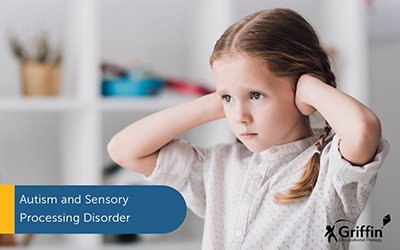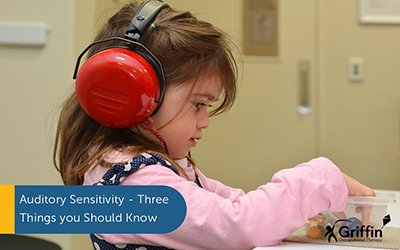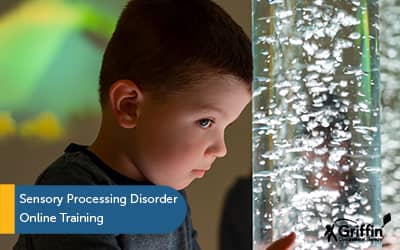Let’s explore oral sensory seeking
Oral sensory seeking, where a child continues to put things in their mouth after the age of two, is a commonly reported behaviour for children with additional needs. This could include sensory issues, autism, developmental delays and learning disabilities. The child might chew or suck on non-food objects available in the environment. Or, the might suck or chew their sleeves or collar, or constantly have a toy or pencil in their mouth. In some cases, they may also eat non-food items such as sand, play dough or soil. In this post I will explore

Let’s explore oral sensory seeking
Oral sensory seeking, where a child continues to put things in their mouth after the age of two, is a commonly reported behaviour for children with additional needs. This could include sensory issues, autism, developmental delays and learning disabilities. The child might chew or suck on non-food objects available in the environment. Or, the might suck or chew their sleeves or collar, or constantly have a toy or pencil in their mouth. In some cases, they may also eat non-food items such as sand, play dough or soil. In this post I will explore
Oral seeking is part of normal development
Oral sensory seeking behaviour, or mouthing items, is a normal behaviour in babies and infants. They use sucking to help to calm themselves and self soothe. This self-soothing can also be called self-regulation. It explains why dummies or pacifiers work so well to help calm down an upset baby. Sucking is also an important survival reflex, which is essential for feeding. In fact, without it we would not be able to feed our newborns.
As they get older, infants then use their mouth to explore the world. It is very normal for children to put everything into their mouth between the ages of 18-24 months. This helps their sensory motor development. It helps them to learn more about an object, such as how big is it, how hard or soft is it, and its shape. The mouth acts like a second pair of eyes, giving the brain extra information about the objects in the world. This behaviour typically reduces from eighteen months but it can continue until two years of age. In this article, I will to explore why some children continue with oral sensory seeking past this age. I will consider why they are still putting non food objects into their mouth and share some ideas on how to help.
What might it look like if a child is oral sensory seeking?
For children that are over two years of age, you might continue to see these behaviours. Remember these behaviours are very normal in children under two years of age. However, past the age of two they would be less common.
Common reasons a child might still be putting things in their mouths past the age of two
Before continuing, I want to again emphasise that it is really normal for children under the age of two to mouth items. The frequency can also increase when children are teething, again completely normal behaviour. Here I will discuss some reasons that older children might continue with oral sensory seeking past this age.
1. The child has developmental delays
As noted above, children use their mouths to explore objects and their world. Older children with developmental delays may continue to use their mouths to explore objects like an 18 month old does as this reflects their developmental age. So, despite on paper being older as they have had their birthday, their brains are still processing information at a much younger age level. They are still working in the sensorimotor stage of development. This is why they are still putting things in their mouth as it is normal for this developmental stage. Their behaviour is essentially reflecting the developmental age rather than their actual age. These children need more time to develop past this stage than their typically developing peers. We give some suggestions of appropriate activities below.
2. The child is using the oral sensory seeking input to self-regulate or self-soothe
As we said above, sucking is very calming. It is a strategy that babies use to help self soothe and regulate. Some children continue to use this strategy even when they are older. It can be a useful sign that your toddler or young child is upset, tired or overwhelmed. It can also be an indicator that they do not have another strategy to use to help themselves calm down.
3. The child is experiencing sensory overload
Children with sensory processing difficulties can put things in their mouth or chew when they are overloaded too. Chewing is also may occur in autism and when there are sensory issues. Sensory overload occurs when the child or adult has experienced too much sensory input from their environment. Their brains become overwhelmed by the amount of information that they have to process. They, therefore, use the oral sensory seeking to help with self-regulation. Chewing and sucking helps to self soothe so it is a strategy that children and adults use to help to calm themselves down if they are experiencing sensory overload. Because the jaw is one of the most powerful muscles in the human body, chewing gives the brain a big hit of proprioceptive sensory input. I explore some ideas to help below, so, keep reading.
4. In some cases, the child may have problems with their teeth
In some cases, the child may have problems with their teeth. It may be that their adult teeth are cutting through. However, it could also be a sign of decay, or infection. If this is suspected, the child should have a check up with their dentist.
5. They may have a medical condition called ‘pica’
Children with pica put all things, not just food, into their mouths. This could be anything from a cigarette butt, to Lego, dirt or a coin. These children don’t distinguish edible and non-edible items. Research has suggested that between 4% and 26% of people with learning disabilities show pica, and the
likelihood of pica occurring increases the more severe the level of learning disability. The National Autism Society suggests that the reasons for pica could by medical, dietary, sensory or behavioural. The NHS provide information about it on page 23 of this booklet, ‘Eating Difficulties in Children with Disabilities’.
When is oral sensory seeking a ‘problem’?
Many children will continue to suck their thumb and chew on items after the age of two. This helps them to calm and self sooth. It can be a really helpful strategy when it is functional.
Oral sensory seeking can, however, be a problem if the child is zoning out when they are chewing or sucking items and therefore not listening in class. It can be a problem for some children as they develop a rash around their mouth, which can be painful and cause discomfort. Some children end up destroying their clothing or other items because they are mouthing or chewing on them excessively. As the child gets older it can also be a problem as it makes them stand out from their peers and can lead to bullying and also affect self-esteem. Depending on what the child mouths, it can also be unsafe (e.g., eating a lot of salt from play dough).
How can I help?
Developmental delay
Where you feel the oral sensory seeking is related to a developmental delay, then it will be important to provide your child with developmental age appropriate activities. These may be games and activities that are designed for younger children, rather than their actual age. I recommend toys that are designed for under two years and are therefore safe to mouth. You can be quite creative with this. Look for toys with different textures. If the child is able to eat safely, you can also use harder food items, such as teething rusks, long carrots or broccoli stems. Different temperatures can give variety. The child may also like toys that vibrate. There is a product called the ARK z-vibe which is very robust and designed for children. It is best to search using the term ‘ARK Z-vibe.’ Otherwise, you can receive some very interesting search results!
Your child will also likely enjoy sensory play activities such as water play, corn flour or edible finger paints, general toys with light, noise or vibration. You must just make sure that any item you are using is safe to be put in their mouth and cannot be accidentally swallowed. In addition, children who are oral sensory seekers benefit from whole body play and games. This includes swings, sand pits, messy play, soft play areas, swimming, etc. For children in wheelchairs, we would definitely recommend seeking out a wheelchair swing or sensory play space they are able to access.
Oral sensory seeking to help with self-regulation and sensory overload
Here, it will depend on what your child is putting into their mouth and when. Firstly, it is helpful to identify if there is a pattern to the oral seeking behaviour. Does it happen more often at home or at school? Is it happening more in the morning or the evening? What events or activities trigger it? It is happening more often when your child is tired? Does it happen more when they are worried? Could they be overloaded? Might they be bored?
If there is a pattern then you may be able to identify what is increasing your child’s arousal. If it is a time of day then you could try some of the suggestions below to help your child to stay a bit calmer at this time. When there is a specific event or activity you may be able to modify the activity to make it easier for your child to manage. Or, if you think they are bored, you could find another activity for them to do.
If you think it is more linked to sensory overload, then you will need to consider how this sensory overload can be reduced during their day. Some of the oral activities below may help with regulation. Heavy work can also be a useful strategy. Your child may also benefit from assessment by an occupational therapist trained in sensory integration.
Understand your child’s sensory needs
For families based in the UK and with children aged between 5-12, Kim is now offering online sensory assessments.
The assessments are designed for families who are unsure if the behaviours they are seeing are because of an underlying sensory need. For families who have concerns and want to know what they can do to help their child. And for families who are tired of waiting for support from national services.
The assessment will be completed using an online form and provides a summary report and suggestions on how to help and support your child. Click here to learn how you can start helping your child today with our online sensory assessment.
Sensory activities to help children who are oral sensory seeking
Please note many of these activities include food. It is expected that the adult using the suggestions considers any allergies or dietary requirements the child may have. As a general rule, chewing and sucking have a more calming effect. Crunchy textures can be more alerting, but in some cases can also help to reorganise.
General oral activities to help children oral sensory seekers include:
For children that prefer sucking you can try:
If your child prefers crunchy textures you could try:
For children who prefer to chew:
Remember
Remember, most oral sensory seekers are looking for ways to soothe themselves and stay calm. It is a way to self-regulate. So, once you recognise the symptom and its triggers, and find alternative safe self-regulation strategies that work for them, it does not take long for behaviour to change.
Where to Next?
To explore chewing further we recommend Help! Why is my child chewing on clothing and other things?
If you want to learn more about sensory chew toys then this is your next article Tips for Choosing Sensory Chew Toys.
You can learn more about sensory regulation here Sensory regulation strategies – what are they and how can they help your child?



